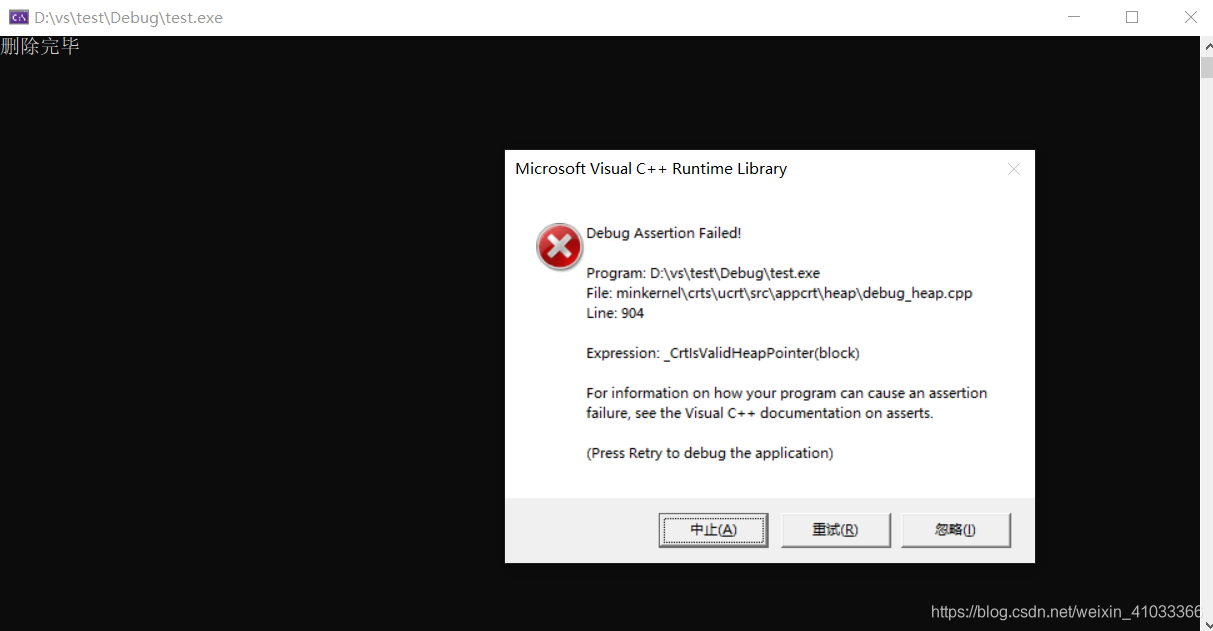概括的说:浅拷贝是让两个指针指向同一个位置,而深拷贝是让另一个指针自己再开辟空间。
#include<bits/stdc++.h>
using namespace std;
class Student {
int name;
int* p;
public:
~Student() {
//cout << p << endl;
delete p ; //delete只能和New连用,这里p也是New出来的。
cout << "删除完毕" << endl;
}
Student() {
p = new int();
}
};
int main() {
Student a=*(new Student());
Student b(a); //拷贝复制过来 这是浅拷贝 指向一个位置
return 0;
}
运行时报错:

我们可以看到只执行了一个删除操作,这是为什么?
因为a和b都指向同一个位置,当程序结束要调用析构函数时,会出现重复调用,多次delete所以报错。
归根结底是因为我们让两个指针指向了同一个位置,那么怎么改呢?
#include<bits/stdc++.h>
using namespace std;
class Student {
int name;
int* p;
public:
~Student() {
//cout << p << endl;
delete p ; //delete只能和New连用,这里p也是New出来的。
cout << "删除完毕" << endl;
}
Student() {
p = new int();
}
Student(const Student& a) {
name = a.name;
}
};
int main() {
Student a=*(new Student());
Student b(a); //拷贝复制过来 这是浅拷贝 指向一个位置
return 0;
}

删除完毕,自定义了拷贝复制函数,又开辟了空间(深拷贝)。
其实我们不必去纠结这个问题,c++这些细节十分晦涩。这里delete出现问题也是因为我们自定义了析构函数,在里面自己加了delete,如果我们不加delete,让它执行默认的析构函数。 仍然正确,析构函数delete的时候会现在指针指向的位置是否有指针指向(智能指针),我们正常情况下不需要去写析构函数,所以也不会出现这个错误。
仍然正确,析构函数delete的时候会现在指针指向的位置是否有指针指向(智能指针),我们正常情况下不需要去写析构函数,所以也不会出现这个错误。
正在学习c++,如有错误,欢迎指出。
